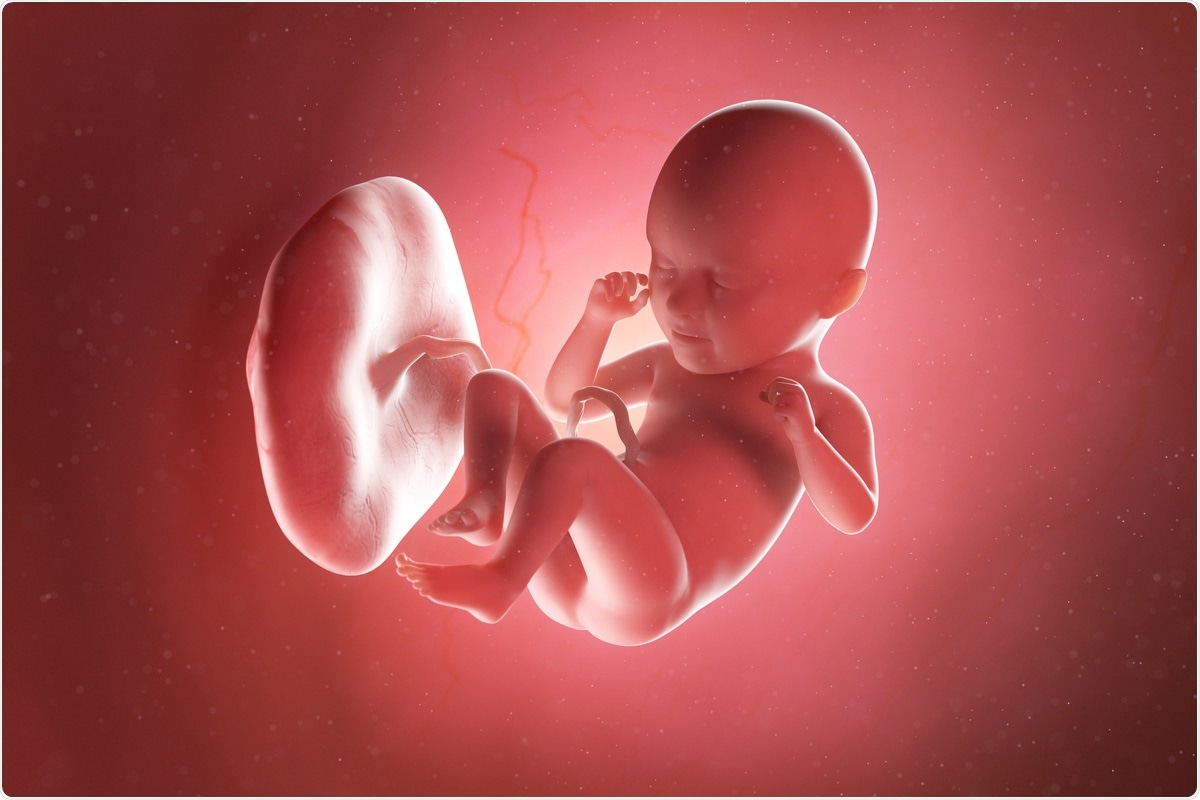Recent studies on the severe acute respiratory syndrome coronavirus 2 (SARS-CoV-2) infection have reported an increased incidence of stillbirth in pregnant people with the coronavirus disease 2019 (COVID-19). Specific placental pathology, which is termed ‘COVID placentitis,’ has been identified by perinatal pathologists to be associated with a high risk of stillbirth and poor neonatal outcomes.
COVID placentitis, which is characterized by increased perivillous fibrin deposition, histiocytic intervillositis, and villous trophoblast necrosis, is reported to be associated with direct viral infection of the syncytiotrophoblast layer of the placenta. Placentitis can lead to a clinical dilemma in obstetric providers, as it can only be diagnosed upon examination of the placenta after childbirth.

Study: Low-level SARS-CoV-2 viremia coincident with COVID placentitis and stillbirth. Image Credit: SciePro / Shutterstock.com
A new study published in Placenta hypothesized that due to the interface between syncytiotrophoblast and maternal blood, patients with COVID placentitis were more likely to contract viremia as compared to SARS-CoV-2 infected patients without placentitis.
About the study
The current study included six patients with COVID placentitis and 12 controls who had positive SARS-CoV-2 infection but no placentitis. The diagnosis of COVID placentitis was based on the presence of histiocytic intervillositis as well as increased perivillous fibrin deposition due to maternal SARS-CoV-2 infection. Estimation of the percentage of villous parenchyma was carried out using both gross and microscopic evidence of involvement.
Furthermore, clinical and demographic data were collected, whereas COVID-19 severity was defined as asymptomatic, moderate, mild, severe, or critical according to the National Institutes of Health. Maternal blood samples were collected following birth, which was then centrifuged and stored at -80° Ce.
Thereafter, viral ribonucleic acid (RNA) was extracted from the samples and tested for SARS-CoV-2 by quantitative reverse transcription-polymerase chain reaction (qRT-PCR). For verification of putative amplification, the specimens were run in technical duplicates with additional replicates.
TOPO cloning and Sanger sequencing of the N1 qPCR product was carried out for specimens with an N1 probe cycle threshold (Ct) value between 35 and 40. All specimens with an N1 probe Ct value less than or equal to 35 were considered to be positive.
Study findings
Of the six patients with COVID placentitis, four experienced mild SARS-CoV-2 infections, one was asymptomatic, and one had moderate severity infection. One case of placentitis reported a stillbirth at 29 4/7 weeks gestational age.
Additionally, of the six placentitis cases, SARS-CoV-2 could be amplified from the maternal blood in two cases, including the case of stillbirth. However, none of the controls were found to be viremic at delivery.
Specific on-target amplification of SARS-CoV-2 was also reported in the case of these two samples. However, another case with placentitis was found to show amplification below the level of detection and thus was considered negative.
Out of the two cases with confirmed low-level viremia, one woman was asymptomatic and delivered a stillborn infant one day after testing positive for COVID-19, whereas the other woman was mildly symptomatic and delivered a healthy infant.
The current study demonstrates the incidence of viremia in pregnant patients in the pre-Delta phase in both stillbirth and mild non-lethal placentitis cases. Therefore, viremia could help to screen pregnant patients with SARS-CoV-2 infection for potential COVID placentitis and risk stratification of stillbirth.
Limitations
The Ct values reported in the study are near or below the commonly used limit of detection of 35, which can lead to the risk of false detection. A second limitation was that viremia could not be detected in some of the placentitis cases tested in the study. Third, near-term research was required for the consideration of low-level viremia as a possible marker of COVID placentitis.
Journal reference:
- Mithal, L. B., Otero, S., Simons, L. M., et al. (2022). Low-level SARS-CoV-2 viremia coincident with COVID placentitis and stillbirth. Placenta. doi:10.1016/j.placenta.2022.03.003.